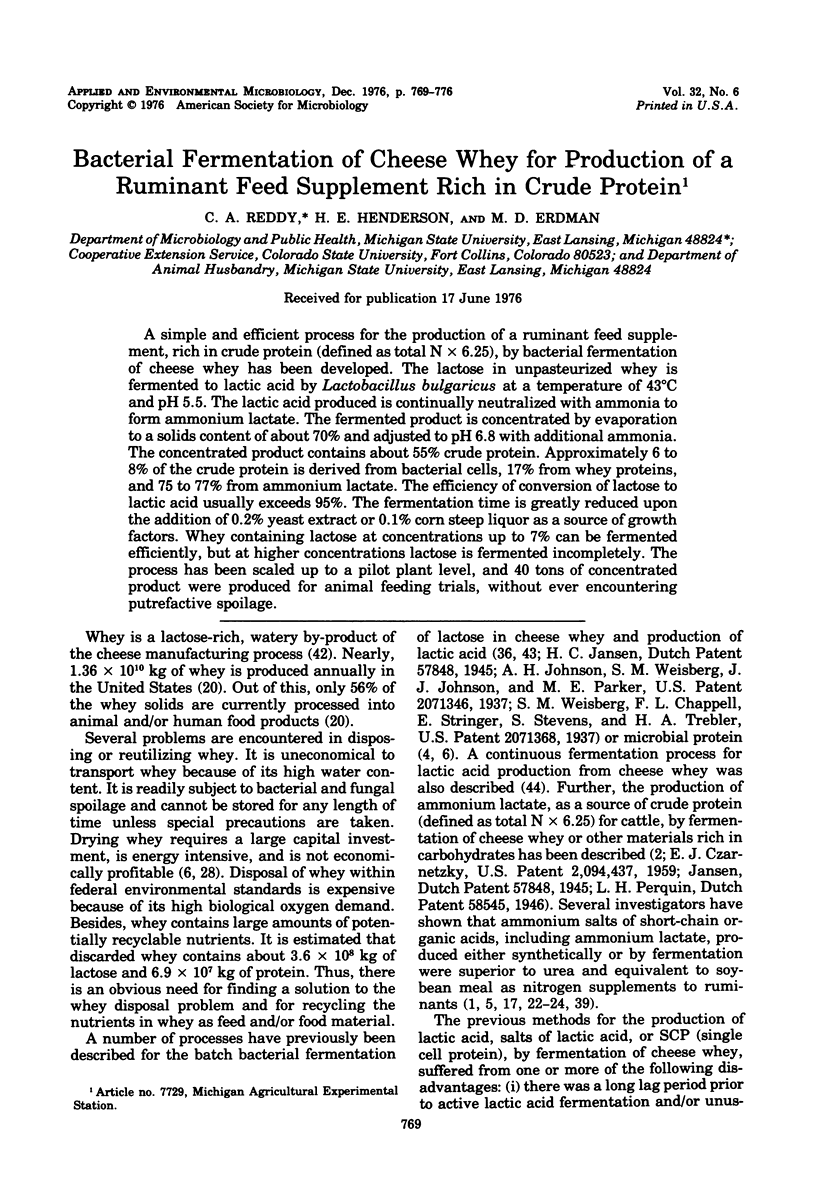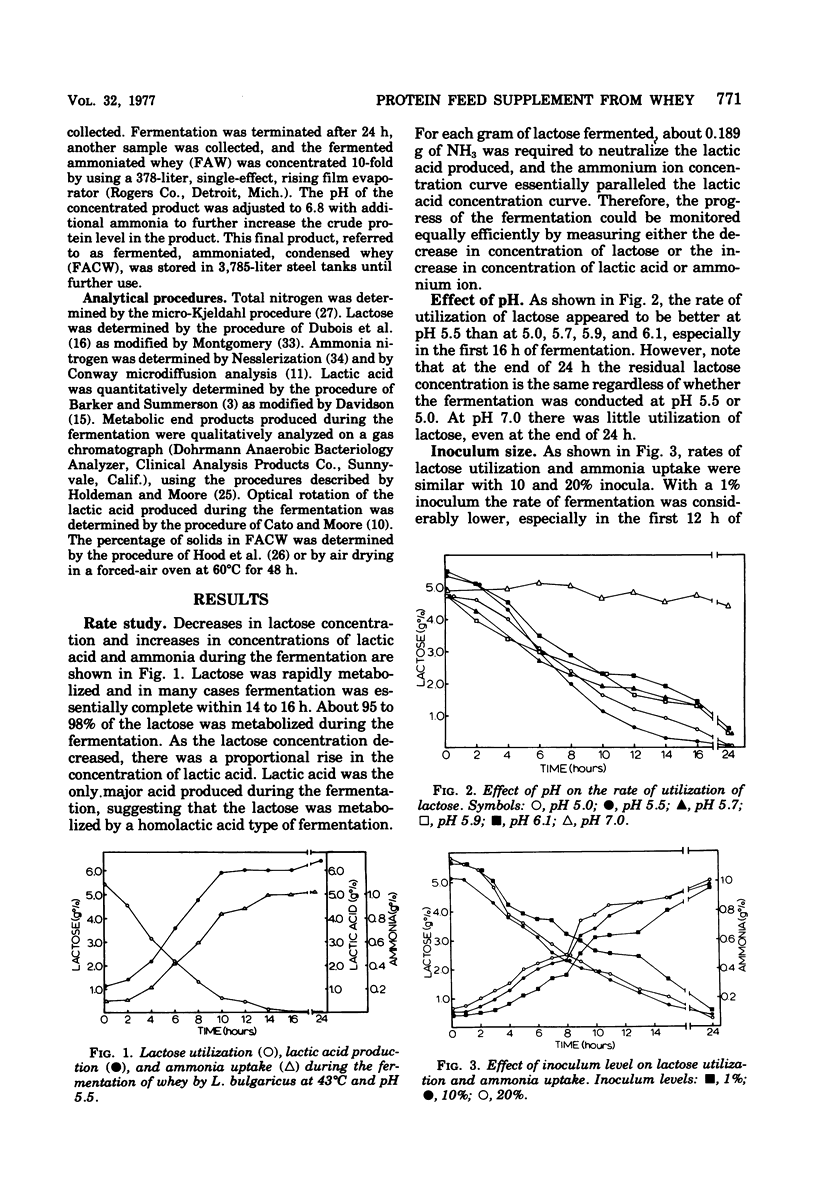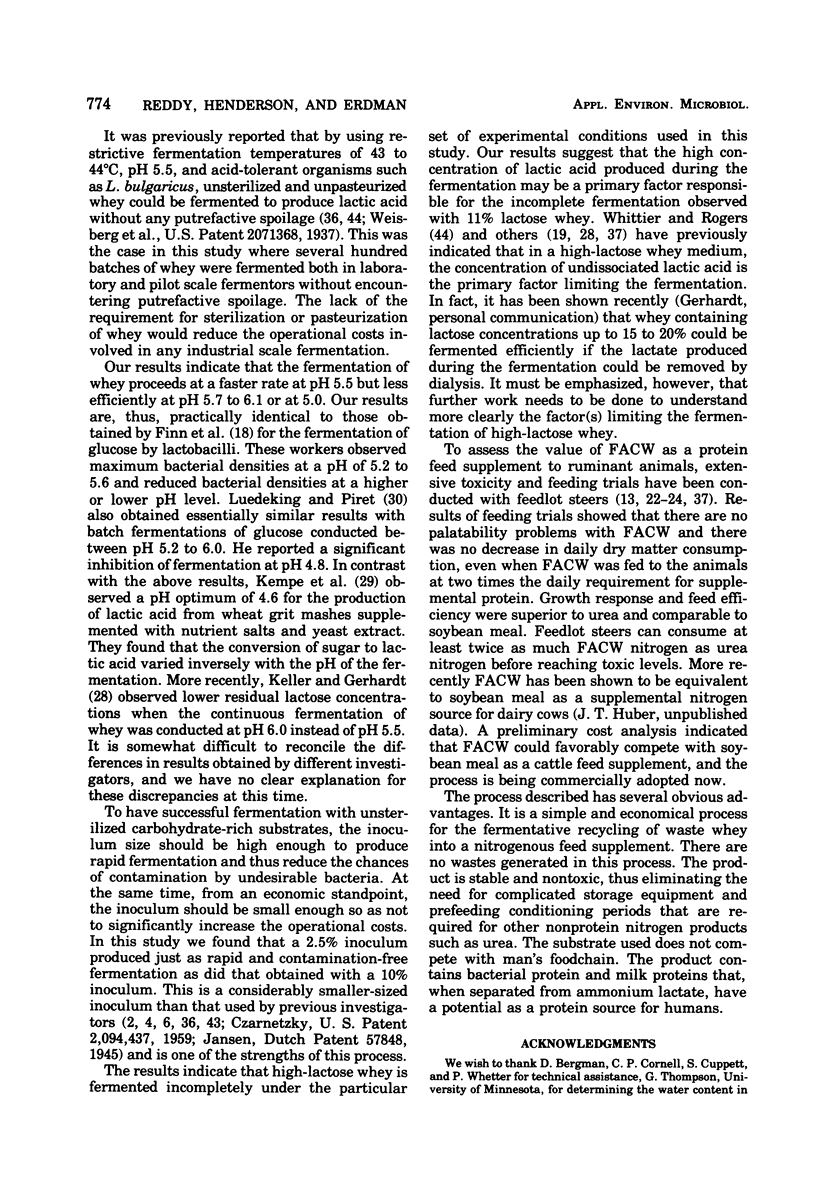Abstract
A simple and efficient process for the production of a ruminant feed supplement, rich in crude protein (defined as total N X 6.25), by bacterial fermentation of cheese whey has been developed. The lactose in unpasteurized whey is fermented to lactate acid by Lactobacillus bulgaricus at a temperature of 43 degrees C and pH 5.5. The lactic acid produced is continually neutralized with ammonia to form ammonium lactate. The fermented product is concentrated by evaporation to a solids content of about 70% and adjusted to pH 6.8 with additional ammonia. The concentrated product contains about 55% crude protein. Approximately 6 to 8% of the crude protein is derived from bacterial cells. 17% from whey proteins, and 75 to 77% from ammonium lactate. The efficiency of conversion of lactose to lactic acid usually exceeds 95%. The fermentation time is greatly reduced upon the addition of 0.2% yeast extract or 0.1% corn steep liquor as a source of growth factors. Whey containing lactose at concentrations up to 7% can be fermented efficiently, but at higher concentrations lactose is fermented incompletely. The process has been scaled up to a pilot plant level, and 40 tons of concentrated product were produced fro animal feeding trials, without ever encountering putrefactive spoilage.
Full text
PDF







Selected References
These references are in PubMed. This may not be the complete list of references from this article.
- CATO E. P., MOORE W. E. A ROUTINE DETERMINATION OF THE OPTICALLY ACTIVE ISOMERS OF LACTIC ACID FOR BACTERIAL CLASSIFICATION. Can J Microbiol. 1965 Apr;11:319–324. doi: 10.1139/m65-039. [DOI] [PubMed] [Google Scholar]
- Caldwell D. R., Bryant M. P. Medium without rumen fluid for nonselective enumeration and isolation of rumen bacteria. Appl Microbiol. 1966 Sep;14(5):794–801. doi: 10.1128/am.14.5.794-801.1966. [DOI] [PMC free article] [PubMed] [Google Scholar]
- Friedman M. R., Gaden E. L., Jr Growth and acid production by Lactobacillus (L) delbrueckii in a dialysis culture system. Biotechnol Bioeng. 1970 Nov;12(6):961–974. doi: 10.1002/bit.260120608. [DOI] [PubMed] [Google Scholar]
- Hood R. L., Allen C. E., Goodrich R. D., Meiske J. C. A rapid method for the direct chemical determination of water in fermented feeds. J Anim Sci. 1971 Dec;33(6):1310–1314. doi: 10.2527/jas1971.3361310x. [DOI] [PubMed] [Google Scholar]
- MONTGOMERY R. Further studies of the phenol-sulfuric acid reagent for carbohydrates. Biochim Biophys Acta. 1961 Apr 15;48:591–593. doi: 10.1016/0006-3002(61)90059-2. [DOI] [PubMed] [Google Scholar]
- Rogers L. A., Whittier E. O. LIMITING FACTORS IN THE LACTIC FERMENTATION. J Bacteriol. 1928 Oct;16(4):211–229. doi: 10.1128/jb.16.4.211-229.1928. [DOI] [PMC free article] [PubMed] [Google Scholar]
- TITTSLER R. P., PEDERSON C. S., SNELL E. E., HENDLIN D., NIVEN C. F., Jr Symposium on the lactic acid bacteria. Bacteriol Rev. 1952 Dec;16(4):227–260. doi: 10.1128/br.16.4.227-260.1952. [DOI] [PMC free article] [PubMed] [Google Scholar]


